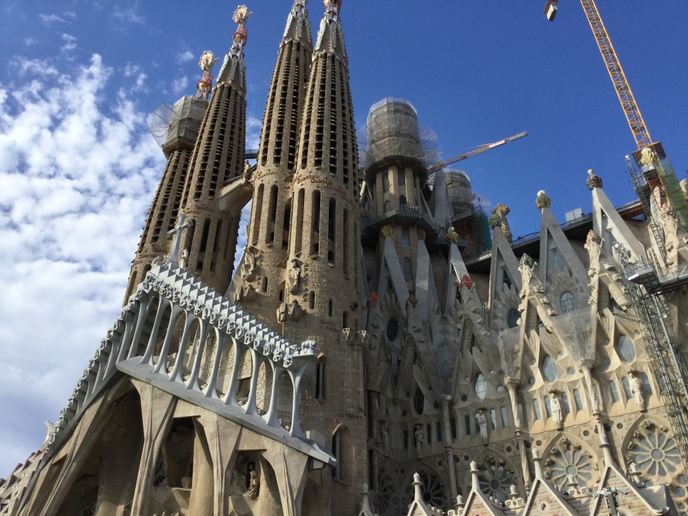3D models explore our built cultural heritage through time, on-site and remotely
While 3D reconstruction has greatly enhanced audiences’ experience of cultural heritage, it is still hampered by the limitations of the equipment involved, storage capabilities and cost-effectiveness. By adapting currently available technology, the EU-supported INCEPTION (Inclusive Cultural Heritage in Europe through 3D semantic modelling) project has redefined how 3D modelling can render our cultural heritage more accessible. INCEPTION used advanced Building Information Modelling (BIM) techniques, to create next-generation 3D models of artefacts and environments, accompanied digitally by contextual technical and historical information. These models were integrated into the project’s web platform which users could access using virtual reality (VR) and augmented reality (AR) tools. Using interactive features such as Time Machine, users can experience the dynamic reconstruction of buildings through time.
3D modelling: capture, processing and end use
When it comes to modelling buildings or heritage sites, 3D laser scanners and data capturing technologies (including drones and robots) usually provide the initial data sources for BIM models. INCEPTION captures this data and uploads it to its platform where it is accompanied by geospatial coordinates to position objects or sites of interest (such as historical buildings) on a world map. The models are then enriched with explanatory digital information (such as historical documents) corresponding to physical features or points in time. Using a standard web browser, users from scholars to members of the public can search for models uploaded onto the platform (free of charge) using keywords, as well as spatial and multi-criteria queries. They can then interact with the model either on-site, using VR tools, or remotely via the web platform. Users can select a period of time or a specific physical feature to explore and the appropriate version of the model will appear. For example, with the model of the Istituto degli Innocenti (one of the project case studies) in Florence, Italy, by selecting one of its nine semicircular arches, users can learn not only about its terracotta designs (by Andrea della Robbia), but also about the building’s original function as an orphanage, to which the relief design alludes. INCEPTION’s open standards and workflows for 3D cultural heritage modelling (known as ‘Open H-BIM’) allow the technology to be adopted by wider cultural heritage efforts. Users can upload basic models to the system and then update them over time, like a wiki. Additionally, all the platform’s information is encoded according to the semantic web’s standards, making it machine readable. The INCEPTION process was tested across nine Demonstration Cases from six European partner countries (Croatia, Cyprus, Greece, Italy, the Netherlands and Spain) selected for their range of contexts, differing in typology, physical dimensions, state of conservation and main purpose (tourism, conservation, etc.). “The groundbreaking technical core of the INCEPTION platform redefines the significance of 3D heritage models, positioning them as knowledge aggregators,” says Roberto Di Giulio, project coordinator. “The immediate next step is to populate the platform with more 3D models from European cultural heritage buildings and sites, linking materials such as video, images, texts, audio files, etc. from important institutional sources, such as Europeana” adds Di Giulio. The project has resulted in an innovative start-up company, INCEPTION Srl, accredited as a spin-off of the University of Ferrara. The company exploits the outcomes of the EU-funded project by empowering public administrations, museums, site owners, etc. with software solutions based on the INCEPTION Core Engine. It provides solutions for managing, visualising and archiving 3D or BIM models and all related digital documents, aggregated by semantic technologies.
Keywords
INCEPTION, semantic web, cultural heritage, 3D models, Virtual Reality, Augmented Reality, Building Information Modelling, design, heritage sites, digital







